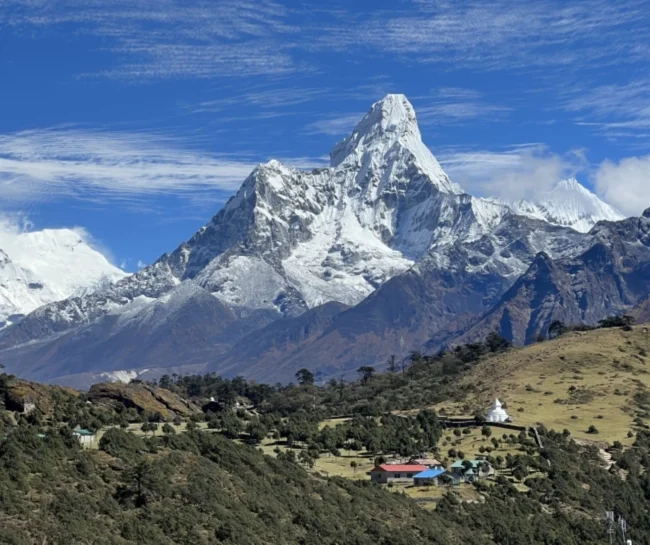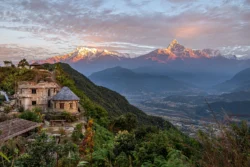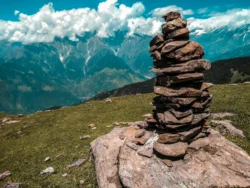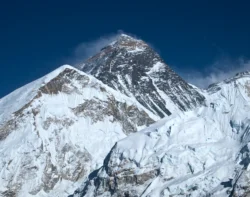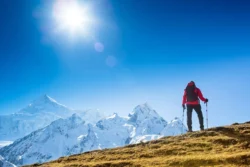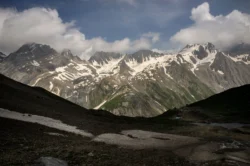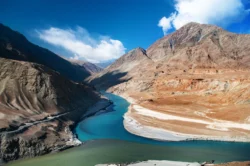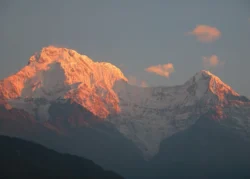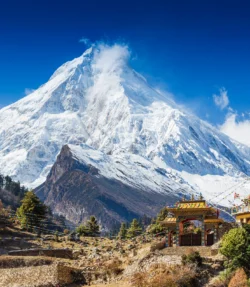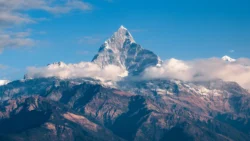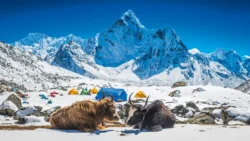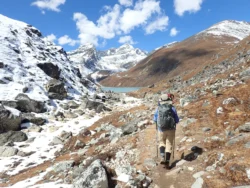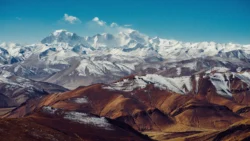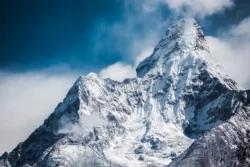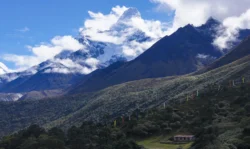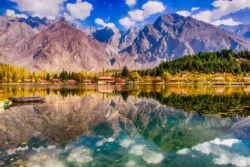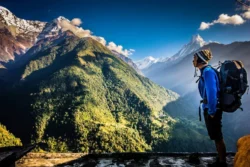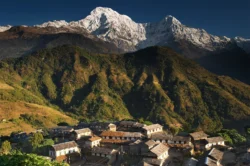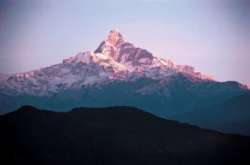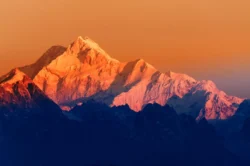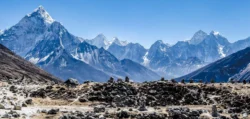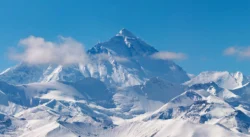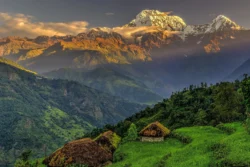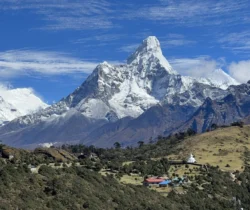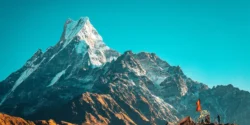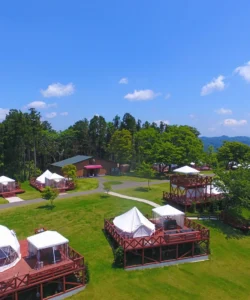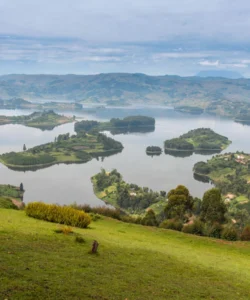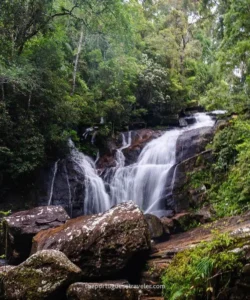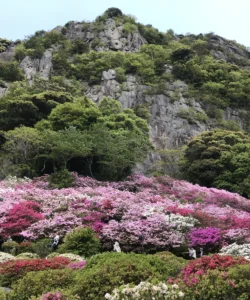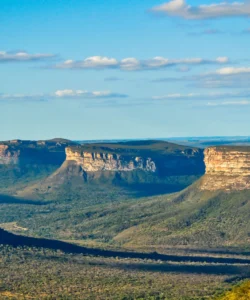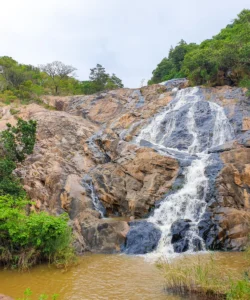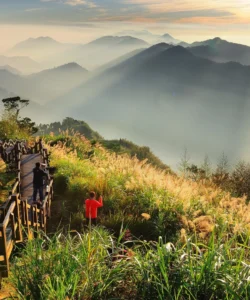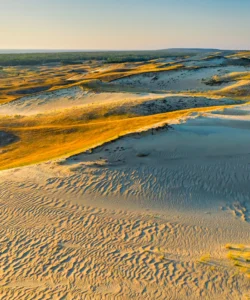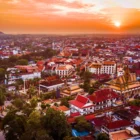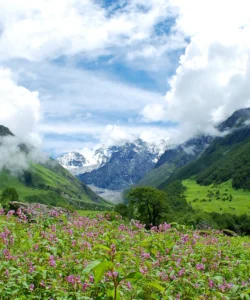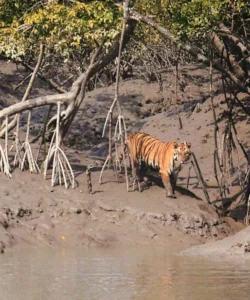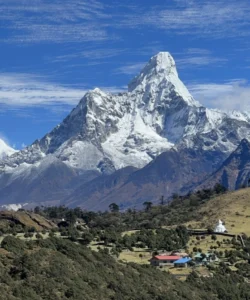The Himalayas are the world’s highest and most majestic mountain range, stretching across a vast expanse of Asia. They are a profound natural wonder, revered for their awe-inspiring peaks, diverse ecosystems, and deep spiritual significance. More than just a geographical feature, the Himalayas are a cultural and historical powerhouse, influencing the lives, beliefs, and architecture of billions.
Name: The Himalayas (Sanskrit: हिमालय, Himālaya, meaning “abode of snow”)
Address: The Himalayan range stretches for approximately 2,500 kilometers (1,550 miles) across south-central Asia.
Himalayan Countries: The mountain range spans five countries:
- Nepal (home to Mount Everest)
- Bhutan
- India (with regions like Ladakh, Himachal Pradesh, Uttarakhand, Sikkim, Arunachal Pradesh)
- China (specifically the Tibet Autonomous Region)
- Pakistan (in the Karakoram and Hindu Kush sections)
Some definitions also include parts of Afghanistan and Myanmar.
How to Get There:
Accessing the Himalayas depends entirely on which region you wish to visit, as it’s a colossal range.
- By Air: Major international airports serving the Himalayan region include:
- Kathmandu, Nepal (KTM): For Everest Base Camp trek, Annapurna Circuit, Langtang, and other Nepal treks.
- Leh, India (IXL): For Ladakh region.
- Paro, Bhutan (PBH): For Bhutan treks and cultural tours.
- Bagdogra, India (IXB): For Darjeeling and Sikkim.
- Dehradun, India (DED): For Uttarakhand.
- Islamabad/Skardu, Pakistan: For Karakoram treks (K2, Nanga Parbat).
- By Road: Extensive road networks, though often challenging and seasonal due to mountain passes, connect various Himalayan towns and valleys. Buses, private cars, and jeeps are common.
- By Train: Rail connections exist to foothill cities (e.g., Haridwar, Rishikesh in India) from where onward journey is by road.
- Within the Himalayas: Trekking is the most popular way to explore the interior. Treks can range from easy day hikes to multi-week expeditions requiring guides and porters. Mountain flights offer aerial views of the peaks.
Landscape and Architecture:
The Himalayas boast an incredibly diverse landscape, ranging from subtropical forests at lower elevations to barren alpine and glacial zones at extreme altitudes. The architecture in the Himalayas is deeply intertwined with the environment, often reflecting spiritual beliefs and practical adaptations to the harsh climate.
- Soaring Peaks and Glaciers: The most striking features are the highest mountains in the world, with over 100 peaks exceeding 7,200 meters (23,600 feet), including Mount Everest (8,848.86 meters / 29,031.7 feet), the highest on Earth. Jagged, snow-capped peaks, massive glaciers, and deep river gorges are hallmarks of the high Himalayas. The range is also characterized by a series of parallel mountain ranges:
- Shivalik Hills (Outer Himalayas): The southernmost and lowest range, with an average height of 900-1200 meters.
- Lesser Himalayas (Middle Himalayas): Averaging 3,700-4,500 meters, home to famous hill stations like Shimla, Darjeeling, and Nainital, and fertile valleys.
- Greater Himalayas (Himadri or Inner Himalayas): The highest and most continuous range, with an average height of 6,000 meters, containing all the world’s highest peaks and numerous glaciers.
- Trans-Himalaya / Tibetan Himalaya: North of the Greater Himalayas, featuring arid high-altitude plateaus.
- Deep River Gorges and Valleys: Major rivers like the Indus, Ganges, Brahmaputra, Mekong, and Yangtze originate from Himalayan glaciers, carving out immense gorges and creating fertile valleys that sustain vast populations downstream.
- Diverse Ecosystems: The Himalayas are a biodiversity hotspot, supporting a remarkable range of climates from tropical to arctic, and diverse ecosystems including subtropical forests, temperate forests, alpine meadows, and barren rock/ice, home to elusive species like snow leopards, red pandas, and Himalayan tahr.
- Lakes: High-altitude alpine lakes (like Pangong Tso and Tso Moriri in Ladakh) add to the serene beauty.
- Himalayan Architecture: Traditional architecture is characterized by its adaptation to the mountainous terrain, seismic activity, and harsh climate, often reflecting spiritual traditions.
- Monasteries and Stupas: Tibetan Buddhist and Bon traditions are prominent, leading to countless monasteries (gompas), often perched dramatically on cliff faces (like Tiger’s Nest in Bhutan) or nestled in valleys. These include intricate murals, prayer wheels, and protector chapels. Stupas (domed, tower-like structures containing relics) are ubiquitous, especially in Buddhist regions, and are central to circumambulation rituals.
- Pagoda Temples: In Nepal (especially Kathmandu Valley), temples often feature multi-tiered pagoda-style roofs, typically built from brick and intricately carved wood (like Nyatapola Temple in Bhaktapur).
- Stone and Wood Construction: Traditional building techniques like Kath-Kuni and Koti Banal in the Middle Himalayas use alternate horizontal layers of stone and wooden beams without cement, providing superb seismic resistance.
- Mud-Brick and Slate Roof Houses: In lower valleys, houses are built with local clay mud bricks and slate roofs.
- Household Shrines and Cave Temples: Spiritual devotion is deeply integrated into daily life, with household shrines and ancient cave temples carved into rock walls.
What Makes It Famous:
- World’s Highest Mountains: Home to Mount Everest and eight of the world’s ten highest peaks, the Himalayas are synonymous with ultimate mountaineering challenges and awe-inspiring heights.
- Spiritual Significance: Considered the “Abode of Gods” in Hinduism (Lord Shiva resides here) and a sacred land in Buddhism, the Himalayas are dotted with countless pilgrimage sites (e.g., Mount Kailash, Kedarnath, Amarnath, Pashupatinath) and ancient monasteries, making them a major spiritual destination.
- Trekking and Adventure Sports: The Himalayas offer world-class trekking routes (e.g., Everest Base Camp, Annapurna Circuit), mountaineering, white-water rafting, paragliding, skiing, and ice climbing, attracting thrill-seekers globally.
- Biodiversity Hotspot: Its immense elevational and climatic variation results in unparalleled biodiversity, making it crucial for global conservation efforts.
- Source of Major Rivers: The Himalayas are the source of most of Asia’s great rivers, sustaining over a billion people downstream and playing a critical role in regional water security.
- Cultural Diversity: The region is a mosaic of diverse ethnic groups (Sherpas, Tibetans, Gurkhas, etc.), languages, and unique cultures, each with distinct traditions, festivals, and architectural styles.
- Youthful Mountain Range: Geologically, they are a relatively young and “alive” mountain range, still growing due to the ongoing collision of the Indian and Eurasian tectonic plates.
Differences from Some Other Wonders:
- Scale and Height: The Himalayas are simply the tallest mountain range in the world, unparalleled in their average height and concentration of ultra-high peaks. Other mountain ranges like the Andes or Alps are lower and less extensive in terms of extreme altitude.
- Ongoing Tectonic Formation: Unlike older, more eroded mountain ranges (e.g., the Appalachians), the Himalayas are a geologically young and active fold mountain range, still rising by several millimeters each year due to continuous plate collision, leading to frequent seismic activity.
- Multi-National Sprawl: While some mountain ranges are within one or two countries, the Himalayas traverse five major nations (and sometimes more), leading to a vast diversity in cultural approaches to the mountains and varied access points.
- Extreme Biodiversity Across Altitudinal Belts: The rapid change in altitude within the Himalayas creates an unparalleled range of climatic zones and ecosystems, leading to a unique biodiversity hotspot that shifts dramatically within short distances, supporting species adapted to tropical, temperate, alpine, and even arctic conditions.
- Spiritual Dominance: While other mountains might have spiritual sites, the pervasive and deeply integrated spiritual significance of the entire Himalayan range in Hinduism and Buddhism, with countless sacred sites, pilgrimage routes, and monasteries, gives it a unique spiritual aura.
- “Roof of the World” Influence: The sheer elevation creates unique climatic barriers, blocking cold winds from Central Asia and influencing monsoon patterns, thus significantly impacting the climate and ecology of a vast part of Asia.
- Predominance of Rock-Cut and Adaptive Architecture: The traditional architecture is uniquely adapted to mountainous terrain, using local materials and anti-seismic building techniques, and features a high concentration of rock-cut monasteries and structures embedded into cliffs, reflecting the spiritual and environmental challenges of living at extreme altitudes.
Himalayas Photos:
